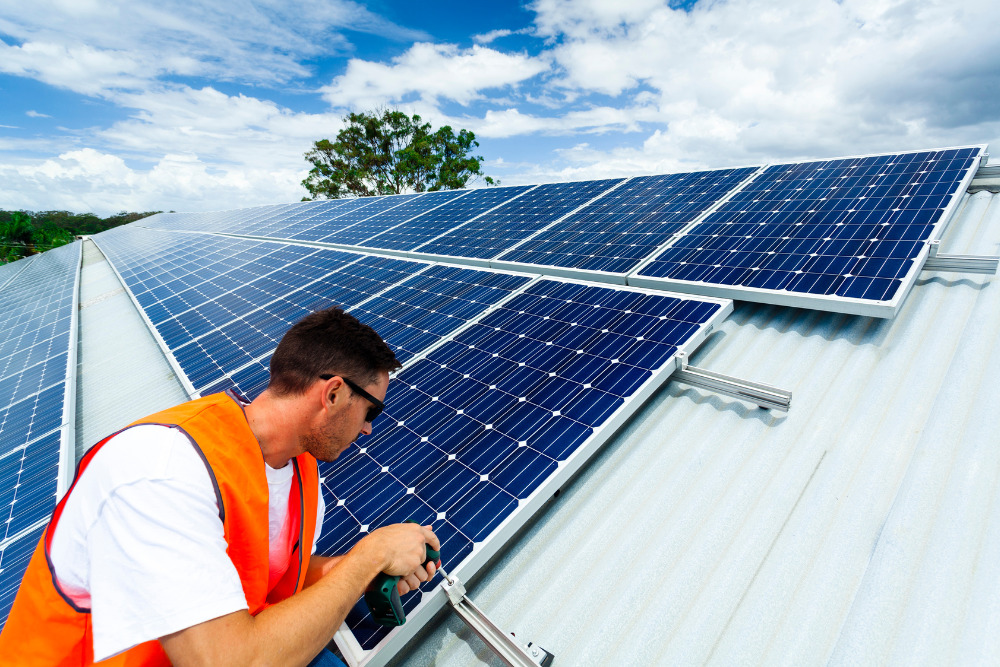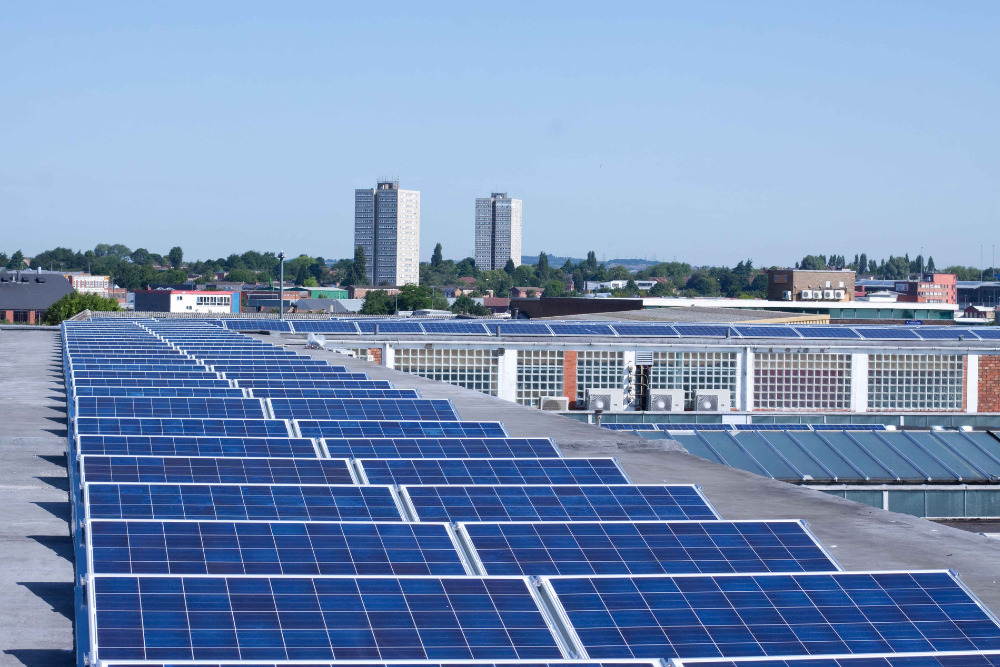
The cost per watt of solar panels refers to the price of generating one watt of electricity using solar panels. It can vary depending on several factors, including the type and quality of the solar panels, installation costs, location, incentives, and economies of scale.
The cost per watt of solar panels is a common metric used to evaluate the affordability and cost-effectiveness of solar panel systems.
The type and quality of solar panels, installation complexity, locations, government incentives, and the economies of scale achieved by the solar industry all affect the total cost per watt.
How Much Do Solar Panels Cost Per Watt?
The Center for Sustainable Energy provides a range of $3-$5 per watt for residential solar and $2-$4 for commercial solar. A broader range is provided below, although many factors affect the price of solar.
Residential Solar Panels:
- Economy Range: $2.50 - $3.50 per watt
- Standard Range: $3.50 - $4.50 per watt
- Premium Range: $4.50 - $6.00+ per watt
Commercial Solar Panels:
- Economy Range: $1.80 - $2.50 per watt
- Standard Range: $2.50 - $3.50 per watt
- Premium Range: $3.50 - $5.00+ per watt
What Affects Solar Installation Costs?
Several factors affect the installation costs of solar for homes, including:
- The size of the system: The larger the system, the more expensive it is.
- The types of solar panels: More efficient panels are more expensive but save you money on your energy bills over time.
- The installation location: Photovoltaic systems are typically less expensive to install in sunny areas, like California or Arizona, than in cloudier regions.
- Labor costs: Installation is higher in some areas than in others simply due to higher labor costs.

What Is The Average Price For Solar For Homes?
The average price for residential solar systems in the United States is $15,000 to $25,000. This price includes the cost of the panels, the mounting system, the inverter, and the installation.
Here is a breakdown of the average cost of solar for different size homes:
- 2 kW (kilowatt-hour) systems: $10,000 to $15,000
- 3 kW systems: $15,000 to $20,000
- 4 kW systems: $20,000 to $25,000
- 5 kW systems: $25,000 to $30,000
Several incentives are available to offset the overall cost of solar. These include:
- The federal solar tax credit: The ITC is worth 30% of the cost of solar panels and installation. It reduces your federal income tax liability for the tax year the system was installed.
- State and local incentives: Many states and localities offer incentives for solar, such as rebates, tax credits, and net metering.
What Is The Average Price For Solar For Businesses?
The average price of solar for businesses in the United States is $16,000 to $70,000, with large-scale warehouses and solar farms being much more costly.
Most businesses require much larger and more complex systems, although economies of scale typically keep the cost per watt lower for commercial solar. Keeping the same format as above for convenience, here is the range of results:
- 25 kW system: $50,000 to $100,000
- 50 kW system: $100,000 to $200,000
- 100 kW system: $200,000 to $300,000
- 250 kW system: $500,000 to $600,000
Solar Incentives For Businesses
Some solar tax incentives are available for businesses that are unavailable to residents. These include:
- The federal production tax credit. The PTC is a per kilowatt-hour (kWh) tax credit for electricity generated by solar. Generally, it cannot be combined with the investment tax credit.
- The accelerated depreciation deduction. Businesses can also claim an accelerated depreciation deduction for installing solar panels. This deduction allows businesses to deduct a portion of the system cost annually over five years.
- State and local tax incentives. Many states and localities offer tax incentives to businesses that install solar energy systems. These incentives vary from state to state, so check with your local government or use the DSIRE database to see what’s available.

Other Aspects Of Solar Panel Costs
Panel Costs
The most common types of solar panels are monocrystalline, polycrystalline, and thin-film panels. Monocrystalline solar panel prices tend to be higher due to their high efficiency solar cells and durability, while polycrystalline panels are more affordable. Thin-film panels offer a cost-effective alternative but have lower efficiency rates.
Wattage and Energy Production
The wattage of solar panels directly affects their energy production capabilities. Higher-wattage panels produce more electricity and reduce your reliance on utility companies.
Upfront Costs and Financing Options
Upfront costs of solar panel installation are related to the system size, location, and panel manufacturer. However, prices have steadily declined over the years due to technological advancements and streamlined supply chains.
Financing options, including solar loans and solar leases, provide flexibility for homeowners to go solar with reduced upfront expenses.
Soft Costs
Costs not directly related to equipment and installation, such as permitting and inspections, add to the upfront costs of solar. While permitting fees vary by location, many states are pushing to follow Colorado’s Fair Permit Act, which caps permitting fees at $500 for residential and $1,000 for commercial solar panel installation costs.
Levelized Cost of Electricity and Payback Period
Evaluating the levelized cost of electricity helps determine the overall financial benefit of installing solar panels. This metric considers the total system cost, energy production, energy usage, and the expected lifespan of the panels.
The payback period represents the time it takes to recover your initial investment through electricity bill savings. A shorter payback period indicates a higher return on investment.
Government Incentives and Tax Credits
The Department of Energy and other governmental bodies provide various incentives and tax credits to promote clean energy adoption. These financial benefits significantly offset the cost of solar panel installations and accelerate the payback period.
Energy Savings and Utility Bills
Solar panels save homeowners money by reducing their reliance on the utility company and lowering monthly utility bills. By generating clean energy, you can offset a portion, or even the entirety, of your electricity consumption. This translates into long-term savings on your energy costs and can help protect your household against rising electricity rates.
Battery Storage and Energy Resilience
Battery storage systems allow homeowners to store excess solar energy for later use, even during power outages and periods of no sun. While adding battery storage increases the upfront cost of a PV system, it provides energy independence and maximizes the self-consumption of electricity generated by the system.
Impact on Home Value and Durability
Solar panel installations have been shown to increase the value of homes. Buyers increasingly recognize the benefits of owning a clean energy system, leading to higher resale values. Moreover, reputable solar companies often provide transferable warranties for their panels, ensuring durability and peace of mind for future homeowners.
Regional Considerations
Solar panel costs and savings can vary by region. Factors such as local electricity rates, solar resource availability, interconnection regulations, and state-specific incentives influence the financial viability of solar installations. For example, New York offers generous incentives and net metering policies, making solar more financially attractive for homeowners in the state.
Contact reputable solar providers, request quotes, and compare financing options to gather current information on solar panel costs per watt in your area.


